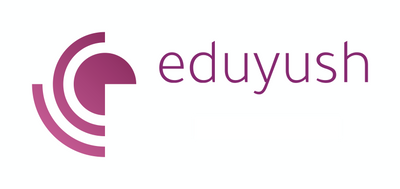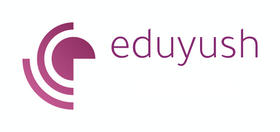40 AML KYC Interview Questions - Keep Your Financial Institution Secure!
AML KYC Interview questions and answers
Interviewing for a job can be intimidating, but with the proper preparation, it doesn't have to be. Knowing what questions to expect and how best to answer them will give you greater confidence in your prospects of landing the role.
This blog offers an invaluable guide: our 40 top interview questions on Anti-Money Laundering Know Your Customer (AML KYC), along with helpful answers that will impress any hiring team. So read on if you're ready to put forth your best self at your upcoming AML KYC job interview!
We break the interview questions by sub-topic to make it easier for you to work on your strengths and weaknesses by topic.
Topics covered
- Introduction to AML and KYC
- Risk assessment and customer due diligence
- AML policies and procedures
- Suspicious activity reporting and investigation
- Sanctions screening and monitoring
- Ongoing monitoring and review
Introduction to AML and KYC
What is the purpose of AML and KYC regulations?
The purpose of AML and KYC regulations is to prevent financial crimes such as money laundering and terrorism financing by requiring financial institutions to identify and verify the identity of their customers and to monitor their transactions for suspicious activity.
What are some examples of financial crimes that AML and KYC regulations aim to prevent?
Some examples of financial crimes that AML and KYC regulations aim to prevent include money laundering, terrorism financing, fraud, and tax evasion.
What are the legal and regulatory frameworks for AML and KYC?
The legal and regulatory frameworks for AML and KYC vary by country. Still, they may include legislation such as the Bank Secrecy Act in the United States and the Proceeds of Crime Act in the United Kingdom. Financial institutions may also be subject to guidelines and requirements from regulatory bodies such as the Financial Crimes Enforcement Network (FinCEN) in the United States and the Financial Conduct Authority (FCA) in the United Kingdom.
What are some standard techniques used in money laundering?
Some standard techniques used in money laundering include using shell companies, transferring funds through multiple accounts, and using legitimate businesses to mask illegal activity.
How do AML and KYC help to prevent financial crimes and money laundering?
AML and KYC help to prevent financial crimes and money laundering by requiring financial institutions to identify and verify the identity of their customers and to monitor their transactions for suspicious activity. This helps to ensure that financial institutions are not facilitating illicit activities and allows law enforcement to track and investigate suspicious activity.
Risk assessment and customer due diligence
What is customer due diligence, and why is it necessary?
Customer due diligence is the process of identifying and verifying a customer's identity and assessing the risks associated with their transactions. It is essential because it helps financial institutions to identify and mitigate risks related to money laundering and terrorism financing.
How do you identify and assess risks associated with money laundering and terrorism financing?
Risks associated with money laundering and terrorism financing can be identified and assessed through a risk assessment process that includes evaluating factors such as the customer's business and financial profile, the nature and purpose of the transactions, and the customer's country of origin and geographic location.
What is enhanced due diligence, and when is it required?
Enhanced due diligence is a more thorough process of customer due diligence that may be required for high-risk customers or situations. It may involve additional checks and verification procedures beyond those typically required for standard customer due diligence.
How do you identify and verify the identity of a customer?
Identifying and verifying a customer's identity may include obtaining and reviewing documents such as government-issued identification, proof of address, and documentation of the customer's business or employment. Other verification methods may also be used, such as checking references or obtaining a credit report.
What information should be included in a customer due diligence file?
A customer due diligence file, should include all relevant information about the customer, including their identification and verification documents, risk assessment, and any other information obtained during the customer due diligence process.
AML policies and procedures

How do you establish and implement AML policies and procedures?
Establishing and implementing AML policies and procedures typically involves conducting a risk assessment to identify the specific risks and vulnerabilities of the financial institution and then developing policies and procedures to mitigate those risks. The policies and procedures should be clearly written, communicated to all relevant staff, and reviewed and updated regularly.
What are some critical elements of AML policies and procedures?
Some critical elements of AML policies and procedures may include identifying and verifying customers, monitoring transactions for suspicious activity, filing suspicious activity reports, handling transactions involving high-risk customers or countries, and training staff on AML requirements.
How do you train staff on AML and KYC requirements?
Staff training on AML and KYC requirements may involve various methods, such as in-person training sessions, online courses, and ongoing reminders and updates. It is essential to ensure that all staff know the financial institution's AML and KYC policies and procedures and understand their roles and responsibilities in implementing those policies.
Why is maintaining records and reports related to AML and KYC essential?
Maintaining records and reports related to AML and KYC is essential to demonstrate compliance with legal and regulatory requirements and to facilitate investigations of suspicious activity. These records may include customer due diligence files, transaction records, and suspicious activity reports.
How do you ensure that AML and KYC policies and procedures are effective?
To ensure that AML and KYC policies and procedures are effective, it is essential to regularly review and update them as needed based on changes in the financial institution's risk profile or the regulatory environment. It is also helpful to conduct internal audits or assessments to ensure that the policies and procedures are followed and effectively mitigate risks.
Suspicious activity reporting and investigation

What is suspicious activity, and how is it identified?
Suspicious activity is any unusual or suspicious behaviour or transaction indicative of money laundering or terrorism financing. It can be identified through various methods, such as transaction monitoring and risk assessments, as well as through internal or external reporting by staff or customers.
How should a financial institution report suspicious activity?
A financial institution should report suspicious activity to the appropriate authorities, such as law enforcement or a financial intelligence unit. This may be done by filing a suspicious activity report (SAR) or other required reporting mechanisms.
What is the process for conducting an internal investigation of suspicious activity?
The process for conducting an internal investigation of suspicious activity may vary depending on the specific circumstances and the laws and regulations applicable to the financial institution. However, generally, it will involve identifying and gathering relevant information and evidence, analyzing and evaluating that information, and taking appropriate action based on the investigation findings.
How should a financial institution coordinate with law enforcement agencies concerning suspicious activity?
A financial institution should coordinate with law enforcement agencies concerning suspicious activity by providing any necessary information and assistance per applicable laws and regulations. This may involve sharing information through filing a SAR or other required reporting mechanisms, as well as cooperating with law enforcement investigations.
What potential consequences for a financial institution that fails to report suspicious activity or cooperate with law enforcement?
The potential consequences for a financial institution that fails to report suspicious activity or cooperate with law enforcement may include financial penalties, reputational damage, and criminal prosecution.
What are some red flags that may indicate suspicious activity?
Some red flags that may indicate suspicious activity include unusual or unexpected transactions, transactions that do not align with the customer's known business or financial profile, transactions that involve high-risk countries or jurisdictions, and transactions that involve shell companies or other entities with unclear ownership or control.
How do you prioritize suspicious activity for investigation?
Suspicious activity may be prioritized for investigation based on various factors, such as the level of risk or potential harm associated with the activity, the availability of resources and personnel to conduct the investigation, and the time frame in which the activity occurred.
How do you gather and analyze information and evidence to investigate suspicious activity?
Information and evidence in an investigation of suspicious activity may be gathered from various sources, including customer records, transaction records, and external data sources. Review and analyze this information to identify patterns or trends indicating suspicious activity.
How do you determine the appropriate course of action based on the findings of an investigation of suspicious activity?
The appropriate course of action based on the findings of an investigation of suspicious activity will depend on the specific circumstances and the laws and regulations applicable to the financial institution. Options may include filing a suspicious activity report, terminating the relationship with the customer, or cooperating with law enforcement investigations.
What are some best practices for conducting an internal investigation of suspicious activity?
Some best practices for conducting an internal investigation of suspicious activity include maintaining confidentiality, documenting the investigation process and findings, following established policies and procedures, and seeking guidance from legal or compliance staff as needed.
Sanctions screening and monitoring

What are sanctions, and why are they essential in AML and KYC?
Sanctions are measures governments or international organizations take to restrict or prohibit certain activities or transactions, typically to achieve foreign policy or national security objectives. In AML and KYC, sanctions are necessary because they help prevent financial institutions from facilitating activities prohibited or restricted by law.
How do you identify and screen customers and transactions against sanctions lists?
Customers and transactions can be identified and screened against sanctions lists using software or other tools that compare the information against the lists in real-time or periodically. It may also be necessary to review and verify the information manually.
What is the process for implementing and maintaining a sanctions screening program?
Implementing and maintaining a sanctions screening program may involve several steps, such as establishing policies and procedures, selecting and implementing a screening tool or system, training staff, and conducting ongoing testing and review to ensure the program is effective.
How do you handle a hit on a sanctions list?
Suppose a hit on a sanctions list is identified during the screening process. In that case, it is essential to follow the policies and procedures established by the financial institution for handling such hits. This may involve conducting additional investigation, obtaining approval or authorization to proceed with the transaction, or rejecting the transaction and filing a report as required by law.
How do you stay up-to-date on changes to sanctions lists?
To stay up-to-date on changes to sanctions lists, it is vital to regularly review and update the lists used by the sanctions screening program and to train staff on any changes. Financial institutions may also subscribe to alerts or other notifications to stay informed of new or amended sanctions.
How do you ensure that your sanctions screening program is effective and accurate?
To ensure that a sanctions screening program is effective and accurate, it is vital to regularly review and update the lists and data used in the program and test and validate its accuracy. It is also helpful to conduct internal audits or assessments to ensure that the program works as intended.
What are some challenges in implementing and maintaining a sanctions screening program?
Some challenges in implementing and maintaining a sanctions screening program may include obtaining and maintaining accuracy. Up-to-date data, integrating the program with existing systems and processes and ensuring that staff are trained and proficient in using the program.
How do you handle false positives in a sanctions screening program?
False positives in a sanctions screening program may occur when a customer or transaction is incorrectly identified as a match to a sanctions list. To handle false positives, it may be necessary to conduct additional investigation or verification to confirm or disprove the match. It is essential to have procedures in place to handle false positives efficiently and effectively.
How do you ensure compliance with sanctions requirements when conducting cross-border transactions?
To ensure compliance with sanctions requirements when conducting cross-border transactions, it is vital to screen the parties involved in the transaction against sanctions lists and to obtain any necessary licenses or authorizations before proceeding with the transaction. It is also necessary to consider the specific laws and regulations of the countries involved in the transaction.
Ongoing monitoring and review

Why is ongoing monitoring and review critical in AML and KYC?
Ongoing monitoring and review are essential in AML and KYC because it helps to ensure that financial institutions can identify and mitigate risks related to money laundering and terrorism financing on an ongoing basis. This may involve monitoring customer activity for suspicious activity, reviewing and updating policies and procedures, and conducting internal audits or assessments.
How do you monitor customer activity for suspicious activity?
Customer activity may be monitored for suspicious activity through various methods, such as transaction monitoring, risk assessments, and customer information and activity review. It is essential to have policies and procedures in place for identifying and reporting suspicious activity.
How do you review and update AML and KYC policies and procedures?
AML and KYC policies and procedures should be reviewed and updated regularly to ensure that they are effective and reflect changes in the financial institution's risk profile or regulatory environment. This may involve reviewing the policies and procedures with relevant staff, seeking input from legal or compliance personnel, and incorporating best practices and industry standards.
What are some best practices for conducting ongoing monitoring and review in AML and KYC?
Some best practices for ongoing monitoring and review in AML and KYC include setting clear objectives and expectations, establishing a process for collecting and analyzing data, involving relevant staff and stakeholders in the review process, and documenting the findings and actions taken.
How do you ensure that AML and KYC policies and procedures are followed consistently across the organization?
To ensure that AML and KYC policies and procedures are being followed consistently across the organization, it is vital to provide clear guidance and training to staff, establish a process for monitoring compliance, and take corrective action as needed when policies and procedures are not being followed. It is also helpful to conduct regular audits or assessments to ensure that policies and procedures are followed consistently.
Summing up
Now that you've read through our 50 top interview questions on Anti-Money Laundering Know Your Customer (AML KYC) - along with helpful answers that are sure to impress any hiring team - you should feel more confident and better prepared for your upcoming job interviews. Knowledge is power, after all!
Stay tuned for future blog posts where we'll offer great tips and guides on attending those finance job interviews. In the meantime, why check out some of our other blogs on interview questions?
Interview Questions? Answers.
- Accounting Interview questions and answers
- Accounts receivable interview questions
- Accounts payable interview questions
- ESG Interview questions
- Forensic accountant interview questions
- Financial controller interview questions
- GST interview questions
- IFRS interview questions and answers
- IFRS 15 interview questions and answers
- IFRS 17 Interview Questions and answers
- IFRS 9 Interview Questions and Answers
- IFRS 16 Interview Questions and answers
- Managerial round interview questions and answers
- Blockchain interview questions for finance professionals
It's important to dress professionally for an interview. This usually means wearing a suit or dress pants and a button-down shirt for men, and a suit or a dress for women. Avoid wearing too much perfume or cologne, and make sure your clothes are clean and well-maintained.
It's best to arrive at least 15 minutes early for the interview. This allows you time to gather your thoughts and compose yourself before the interview begins. Arriving too early can also be disruptive, so it's best to arrive at the designated time or a few minutes early.
It's a good idea to bring a few key items to an interview to help you prepare and make a good impression. These might include:
- A copy of your resume and any other relevant documents, such as references or writing samples.
- A portfolio or sample of your work, if applicable.
- A list of questions to ask the interviewer.
- A notebook and pen to take notes.
- Directions to the interview location and contact information for the interviewer, in case you get lost or there is a delay.
t's generally not appropriate to bring a friend or family member to an interview, unless they have been specifically invited or are necessary for accommodation purposes.
If you are running late for an interview, it's important to let the interviewer know as soon as possible. You can try calling or emailing to let them know that you are running behind and to give an estimated arrival time.
If possible, try to give them a good reason for the delay, such as unexpected traffic or a last-minute change in your schedule. It's also a good idea to apologize for the inconvenience and to thank them for their understanding.
- It's generally a good idea to address the interviewer by their professional title and last name, unless they specify otherwise. For example, you could say "Mr./Ms. Smith" or "Dr. Jones."
Yes, it's perfectly acceptable to ask about the company's culture and benefits during the interview. In fact, it's often a good idea to ask about these things to get a better sense of whether the company is a good fit for you. Just make sure to keep the focus on the interview and not get too far off track.
It's okay to admit that you don't know the answer to a question. You can try to respond by saying something like: "I'm not sure about that specific answer, but I am familiar with the general topic and would be happy to do some research and get back to you with more information."
Alternatively, you can try to answer the question by using your own experiences or knowledge to provide context or a related example.
It's generally best to wait until you have received a job offer before discussing salary and benefits.
If the interviewer brings up the topic, you can respond by saying something like: "I'm open to discussing salary and benefits once we have established that we are a good fit for each other. Can you tell me more about the overall compensation package for this position?"
It's important to remember that employers are not allowed to ask questions that discriminate on the basis of race, religion, national origin, age, disability, sexual orientation, or other protected characteristics. If you are asked an illegal question, you can try to redirect the conversation back to your qualifications and skills for the job.
For example, you might say something like: "I'm not comfortable answering that question, but I am excited to talk more about my skills and experiences that make me a strong fit for this position."
It's okay to admit that you don't understand a question and to ask for clarification. You can try saying something like: "I'm sorry, I'm not sure I fully understand the question. Could you please clarify or provide some more context?"
At the end of the interview, thank the interviewer for their time and express your interest in the position. You can also ask about the next steps in the hiring process and when you can expect to hear back. Finally, shake the interviewer's hand and make sure to follow up with a thank-you note or email after the interview.












Leave a comment